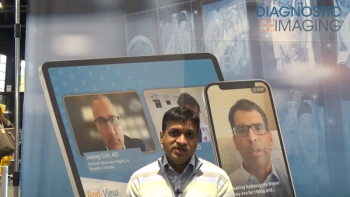
Award-Winning Study Shows Benefits of 3D MRI for Assessing the Fetal Optic Pathway
Three-dimensional (3D) slice-to-volume (SVR) fetal magnetic resonance imaging (MRI) has over six times the fetal optic pathway visualization rate of standard two-dimensional MRI, according to new research presented at the American Roentgen Ray Society (ARRS) 2023 Annual Meeting in Honolulu, Hawaii.
For the visualization and measurement of the fetal optic pathway, emerging research suggests that three-dimensional slice-to-volume (3D SVR) magnetic resonance imaging (MRI) may offer significant advantages over ultrasound and traditional MRI modalities.
In a
The study authors reported a 78.6 percent FOP visualization rate with 3D SVR MRI (55 out of 70 cases) in comparison to 12.8 percent (9 of 70 cases) for traditional MRI. The use of 3D SVR MRI allowed researchers to measure the pre-chiasmatic optic nerve width in 96.4 percent of cases (53 of 55 cases) and the optic chiasm width in 100 percent of cases (55 of 55 cases), according to the study.
“Our preliminary results … demonstrate the promises and utility of this technique,” noted lead study author Eric Juang, M.S., a medical student at the Creighton University School of Medicine in Phoenix and radiology research associate at the Phoenix Children’s Hospital, and colleagues.
Emphasizing that disrupted development of FOP can lead to permanent visual impairment, Juang and colleagues said 3D SVR MRI may facilitate early detection and improved outcomes.
Noting the limitations of oligohydramnios and variable reproducibility with ultrasound, and spatial resolution issues with FOP assessment on 2D fetal MRI, the researchers pointed out multiple advantages with 3D SVR MRI. Potential benefits include improved resolution that facilitates more precise FOP measurements and less susceptibility to motion artifacts, according to Juang and colleagues. They also noted that 3D SVR MRI is not affected by fetal position, which is a limitation of ultrasound assessment.
In regard to the inherent limitations of a single-center retrospective study, the researchers acknowledged the potential for bias, noting that only fetuses with suspected pathologies were referred for MRI scans. Juang and colleagues also noted that the 3D SVR MRI, which requires six or more T2-weighted single-shot fast spin-echo (SSFSE) images for reconstruction, lacks the availability of ultrasound-based approaches.
(Editor's note: For related content, see "
Newsletter
Stay at the forefront of radiology with the Diagnostic Imaging newsletter, delivering the latest news, clinical insights, and imaging advancements for today’s radiologists.



























